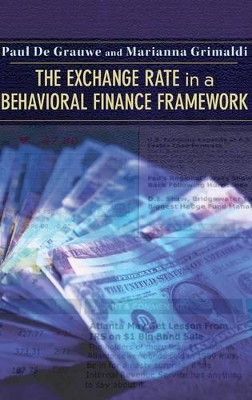This book provides an alternative view of the workings of foreign exchange markets. The authors' modeling approach is based on the idea that agents use simple forecasting rules and switch to those rules that have been shown to be the most profitable in the past. This selection mechanism is based on trial and error and is probably the best possible strategy in an uncertain world, the authors contend. It creates a rich dynamic in the foreign exchange markets and can generate bubbles and crashes. Sensitivity to initial conditions is a pervasive force in De Grauwe and Grimaldi's model. It explains why large exchange-rate changes and volatility clustering occur. It also has important implications for understanding how the news affects the exchange rate. De Grauwe and Grimaldi conclude that news in fundamentals has an unpredictable effect on the exchange rate. Sometimes, they maintain, it alters the exchange rate considerably; at other times it has no effectwhatsoever. The authors also use their model to analyze the effects of official interventions in the foreign exchange market.
They show that simple intervention rules of the "leaning-against-the-wind" variety can be effective in eliminating bubbles and crashes in the exchange rate. They further demonstrate how, quite paradoxically, by intervening in the foreign exchange market the central bank makes the market look more efficient. Clear and comprehensive, The Exchange Rate in a Behavioral Finance Framework is a must-have for analysts in foreign exchange markets as well as students of international finance and economics.
- ISBN10 069112163X
- ISBN13 9780691121635
- Publish Date 2 April 2006
- Publish Status Active
- Publish Country US
- Imprint Princeton University Press
- Format Hardcover
- Pages 224
- Language English
- URL https://press.princeton.edu/isbn/9780691121635
